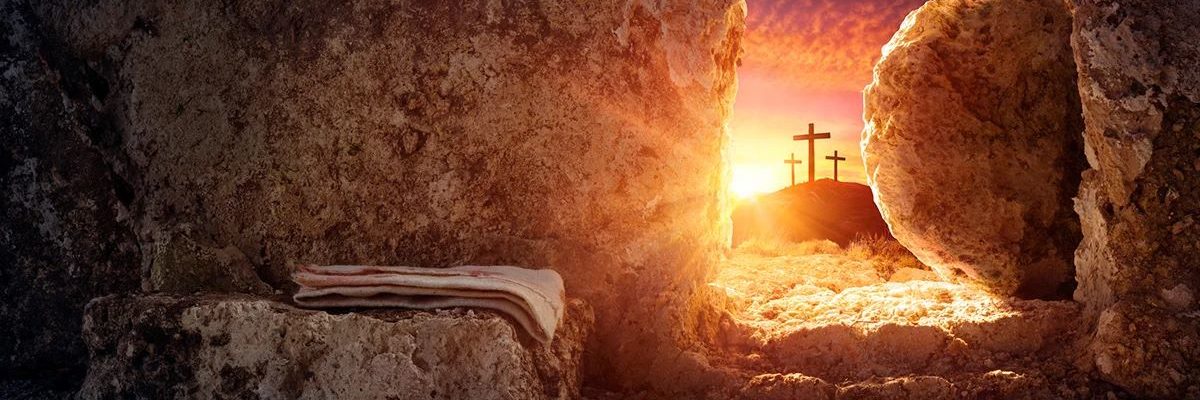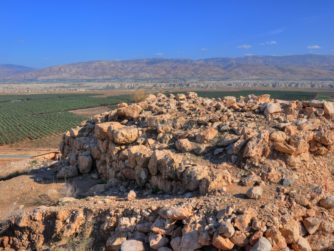The Devil’s Twin Assaults on Jesus at His Death
At the crucifixion, Satan launched two strategic assaults against Jesus—one against His soul, and the other against His body. First, he sought to imprison Jesus’s soul in hell, but this plan failed, as foretold in Psalm 16:10: “For You will not leave my soul in Sheol (Hell), nor will You allow Your Holy One to see corruption.” When this failed, the second strategy was to ensure that Jesus’s body remained secured in the tomb.
However, when Satan failed to hold both the soul and body of Christ, he recognized that redemption had triumphed. As a last resort, he instigated a false narrative—that Jesus’s disciples had stolen His body—a lie that still circulates among many Jews today (Matthew 28:11–15).
A Secret Meeting the Day After His Crucifixion
Unbeknownst to the disciples, a secret meeting took place the day after Jesus’s death. According to Matthew 27:62–66 (NLT), on the Sabbath, the chief priests and Pharisees went to Pilate and said:
“Sir, we remember what that deceiver once said while he was still alive: ‘After three days I will rise from the dead.’ So we request that you seal the tomb until the third day. This will prevent his disciples from coming and stealing his body and then telling everyone he was raised from the dead! If that happens, we’ll be worse off than we were at first.”
Pilate responded, “Take guards and secure it the best you can.” So they sealed the tomb and posted guards to protect it.
Driven by fear of Jesus’s resurrection claim, the religious leaders convinced Pilate to place an official seal on the tomb and deploy guards to prevent any possible removal of the body. Their intent was clear: to preemptively discredit any future resurrection testimony by portraying the disciples as conspirators who might steal the body and spread a deceptive message. In their eyes, the resurrection message was a threat greater than Jesus’s earthly ministry.
Entering the Devil’s Snare
The women, along with Peter and John, walked straight into a trap unknowingly. The chief priests had already framed the narrative that ‘the disciples might steal the body’. Their visit to the tomb—driven by good intentions but rooted in doubt—could have been used as evidence against them.
The women rose early to anoint Jesus’s body, but this was a belated act of devotion, motivated by unbelief. They were seeking the living among the dead. Similarly, Peter and John ran to the tomb in haste, not in expectation of the resurrection, but in uncertainty and fear.
Faith in God and obedience to His word will keep us from the tempter’s snare
Why Did the Women Go to the Tomb?
Mary Magdalene and the other women had witnessed the tomb being sealed with a large stone. So why did they return without knowing how they would remove it? Mark 16:3 captures their question: “Who will roll the stone away from the entrance of the tomb?”
A Belated Sacrifice
The women came to anoint Jesus’s body according to Jewish custom. However, that act had already been fulfilled before His death by Mary, the sister of Martha, who used a costly, uncommon perfume. Their traditional gesture, though sincere, ended in futility—Jesus had already risen.
This speaks to a broader truth: Service rooted in tradition without spiritual revelation can be fruitless.
Church and Worldly Traditions: A Hindrance to the Move of the Holy Spirit
The women who went to anoint Jesus’s body were following traditional customs—yet it was a belated sacrifice. Their well-meaning act was rooted in religious tradition, but it missed the spiritual reality of the resurrection.
Likewise, in many churches today, there is a growing trend of blending worldly traditions and customs into the service of God. Sadly, this often hinders the move of the Holy Spirit and causes the Church to lose its spiritual vitality and power.
True service to God must not be modeled after worldly patterns. It must be something set apart—uncommon and inspired by the Holy Spirit, rooted in God’s Word. It demands our whole heart, our entire life, and a willingness to follow divine instruction rather than cultural expectation.
Any tradition or custom within the Church that does not align with the truth of Scripture should be laid aside. If not, it will lead to unfruitful labor and rob the Church of its witness.
The women’s actions mirrored religious tradition rather than divine direction. Today, many churches fall into a similar trap—integrating worldly customs into worship. These man-made traditions can hinder the move of the Holy Spirit, replacing power with performance.
True service to God must be Spirit-led, grounded in the Word, and marked by total surrender.
Act of Unbelief
Jesus and the angels gave clear instructions:
- Before His death:
“But after I have risen, I will go ahead of you into Galilee.” — Matthew 26:32 - After His resurrection, the angel said:
“He is risen… go tell His disciples and Peter, ‘He is going ahead of you into Galilee.’” — Mark 16:6–7 - Jesus Himself confirmed after the resurrection:
“Go tell my brethren to go to Galilee; there they will see Me.” — Matthew 28:9–10
Despite these three separate confirmations, the disciples did not go to meet with Jesus at Galilee.
Consequences of Unbelief
Despite receiving three clear instructions—before His death, from the angel at the tomb, and from Jesus Himself—none of the disciples went to Galilee as commanded. Their unbelief came with serious consequences:
- Zeal Without Fruit
The disciples and the women acted with urgency and passion, but their efforts were misdirected. Their actions were born out of doubt rather than faith, making their zeal ultimately unproductive. - Risk of Arrest
Had they been discovered at the tomb, they could have been accused of tampering with Jesus’s body. Their presence alone would have confirmed the very suspicion the religious leaders feared—that the disciples had stolen the body. - Discredit to Their Testimony
The devil’s plan was to discredit the disciples among the Jews. If caught, they would have been labeled deceivers, and their witness of the resurrection would have lost credibility. Their reputations would have been stained, making it difficult for them to proclaim the truth.
Although the false rumor that Jesus’s body was stolen by His disciples persists among some Jews to this day, there was no actual evidence to support it. In God’s providence, neither the women nor the disciples were seen at the tomb when it mattered most—preserving the integrity of their testimony.
4. Trapped by Fear and Unbelief
The disciples’ decision to lock themselves indoors for fear of the Jews was a direct consequence of their unbelief. Jesus had already told them to meet Him in Galilee after His resurrection, yet they remained in Jerusalem. If they had believed, they could have:
- Travelled to Galilee after the crucifixion — avoiding Sabbath restrictions the next day by leaving earlier or setting out at dawn on the third day.
- Escaped the propaganda and danger — Their timely departure would have removed them from the city before the religious leaders’ false narrative began to circulate.
- Avoided suspicion — Their absence from the tomb and Jerusalem would have weakened the Jews’ claim that the disciples stole His body.
5. Jesus Changed His Course
Because the disciples remained in fear and confusion, Jesus altered the post-resurrection sequence to seek out and restore His wandering followers:
A. Jesus Delayed His Ascension
He first appeared to Mary Magdalene to reassure her before ascending to the Father John 20:17. This was an expression of His unwavering love and commitment — none of His sheep would be lost John 6:39.
B. Jesus Warned the Women Urgently
After seeing the Father, Jesus met the other women on their way and urgently instructed them to go quickly with His message — because the religious leaders (watchers) were already moving to corrupt the truth (Matthew 28:11–15).
C. Jesus Personally Reached the Doubting Ones
- He appeared to Peter, affirming him in his brokenness.
- He walked with the two disciples to Emmaus, opening their eyes to the Scriptures.
- He met with the 10 disciples that same evening and again with the 11 after eight days, ensuring their doubts were silenced and their faith restored.
Though Jesus was to ascend first as the wave-sheaf offering (Exodus 29:19–28), and then meet His disciples in Galilee but He first turned to gather the scattered, fearful sheep in Jerusalem and Emmaus before going to Galilee.
Here is the commitment of our saviour to us. He will never leave us nor forsaken us but He will help us even when we fall and we call to Him.
6. The delayed Great Commission
The disciples were meant to receive their commissioning in Galilee, but unbelief and fear kept them back. Even after the resurrection, it took over a week for them to obey Jesus’ clear instruction to go there. And when they finally arrived, they were not focused on the mission — instead, they returned to their former profession of fishing.
A. Why Did They Delay Their Journey to Galilee?
Jesus had specifically instructed them to meet Him in Galilee after the resurrection, but they failed to act promptly due to:
- Unbelief — They didn’t fully believe He would rise from the dead, despite repeated warnings.
- Fear of the Jews — Locked behind closed doors in Jerusalem, they were paralyzed by fear and uncertainty.
Only after Jesus appeared to them twice in Jerusalem did they finally decide to go to Galilee — and even then, not in obedience to the commission, but likely out of confusion, shame, or mere routine.
Many traditions celebrate Easter Monday as the “Galilee experience,” but the Scriptures show that the disciples remained in Jerusalem for at least eight days after the resurrection (cf. John 20:26) before heading north to Galilee.
B. Letting Go of the Plow and Looking Back
Upon arriving in Galilee, rather than preparing for the global mission, eight of the disciples went fishing (John 21:2–3). This act revealed a deeper struggle — a relapse into old habits and professions, possibly due to:
- Shame and disappointment — Though they had seen the risen Christ, they may have felt unworthy, unsure of their future, or too weighed down by the events of the past.
- Cultural and family pressure — Relatives or neighbors may have questioned them harshly:
“We warned you not to abandon fishing for that preacher. Where is He now?”
These voices echoed the sentiments once directed at Elisha by the sons of the prophets (cf. 2 Kings 2:3), sowing doubt and discouragement.
When the love of Christ is waning due to shame, sentiment, or fear, the call of God can be easily abandoned. But this was only temporary.
At Pentecost, when the Holy Spirit descended, all fear, shame, and hesitation were swept away — and the disciples became bold witnesses, unshaken by threats, opposition, or past failures.
Other reasons a disciple could look back are found in the article Peter’s Penitence and Confession.
“No guilt in life, no fear in death,
This is the power of Christ in me.
From life’s first cry to final breath,
Jesus commands my destiny.
No power of Hell, no scheme of man,
Can ever pluck me from His hand.
Till He returns or calls me home,
Here in the power of Christ I’ll stand.”
A Final Reflection
Let us not fall into unbelief like the disciples did. Let us not follow tradition without revelation. Instead, may we walk in faith, guided by God’s Word and the Holy Spirit.
Prayer
Lord Jesus, help me to believe and obey all you say to me. Help me not to be full of zeal without your knowledge. Help my testimony of Jesus be ever true. Amen








